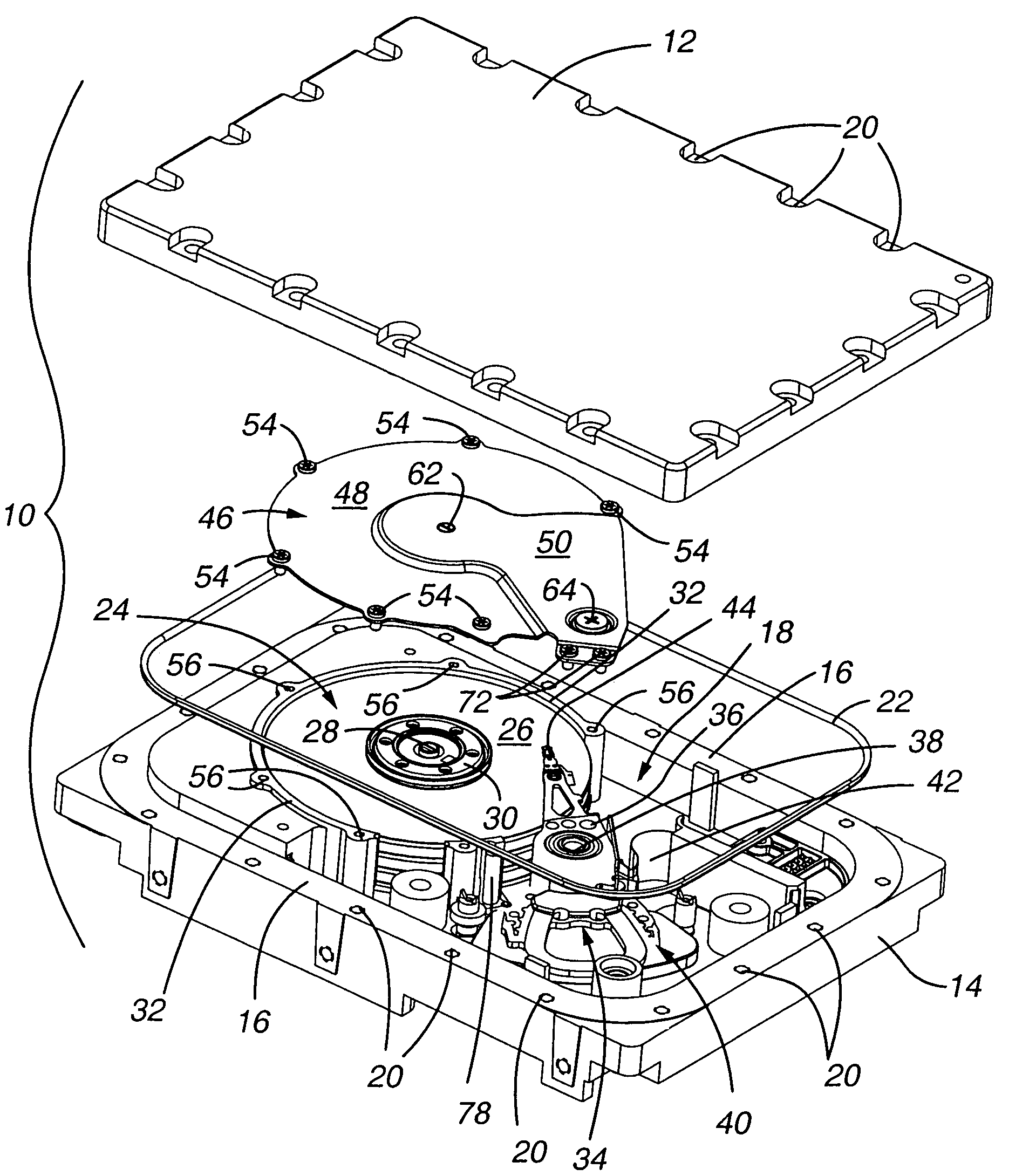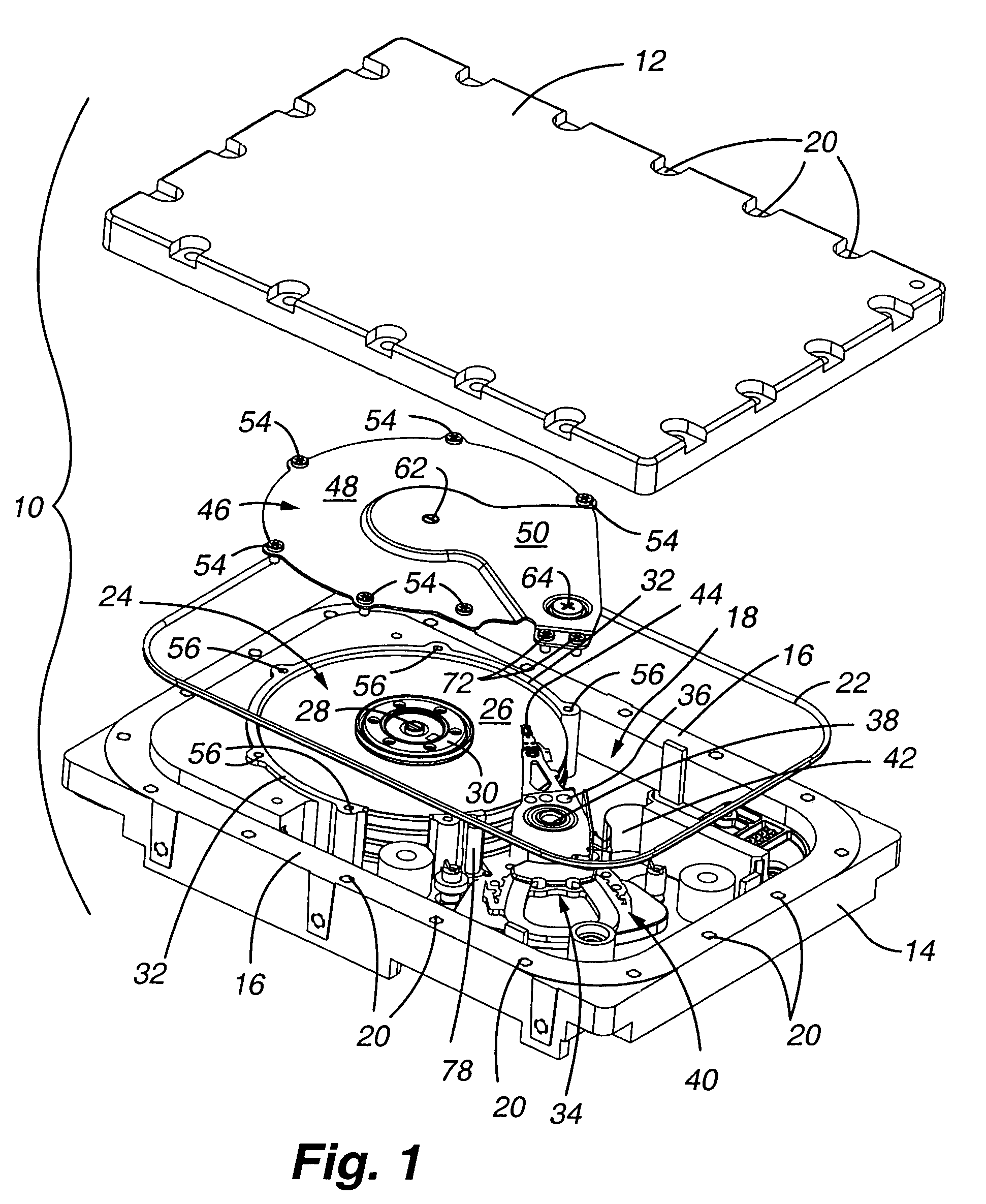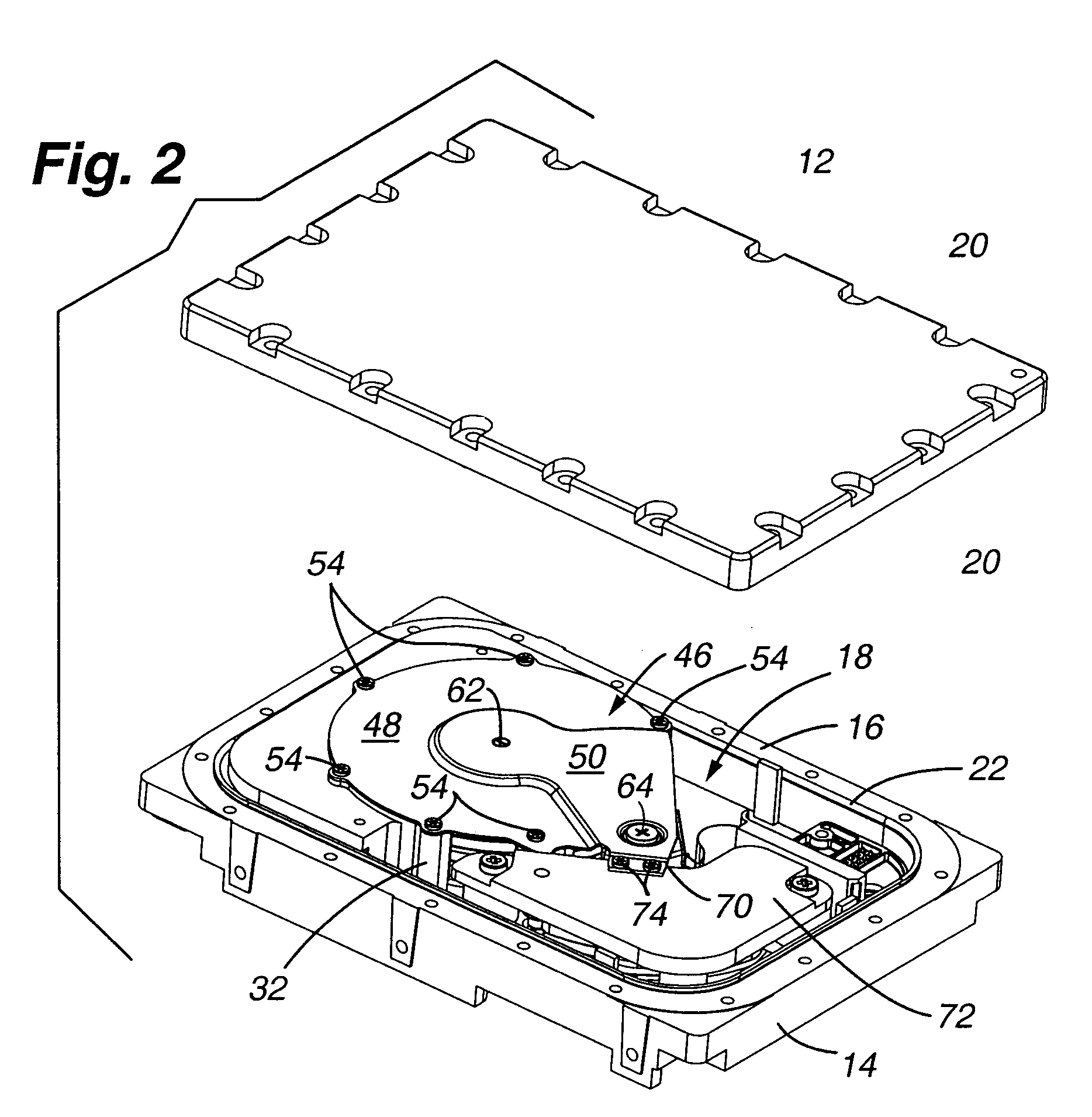Hermetically sealed housing with interior capture plate
- Summary
- Abstract
- Description
- Claims
- Application Information
AI Technical Summary
Benefits of technology
Problems solved by technology
Method used
Image
Examples
Embodiment Construction
[0030]Turning to FIG. 1, an exploded perspective view of a disk drive of the present invention is shown. The disk drive assembly 10 generally comprises a cover 12 and base plate 14. The base plate has perimeter walls 16 which define an inner chamber 18. When the cover plate is secured to the base plate, the inner chamber is filled with a low density gas such as helium to create a pressurized low density gas environment for operation of the disk drive components. The cover plate and base plate are provided with aligned apertures 20 equally spaced around the perimeter of each for securing the cover to the base plate. The apertures within the base plate are typically threaded to receive fasteners (not shown). Additionally, it has been determined that a metal C-shaped seal 22 is more suitably adapted to maintaining the pressurized low density gas environment within the chamber 18 than a conventional rubber seal. In the preferred embodiment, the cover and base plate are secured by the fa...
PUM
 Login to View More
Login to View More Abstract
Description
Claims
Application Information
 Login to View More
Login to View More - R&D
- Intellectual Property
- Life Sciences
- Materials
- Tech Scout
- Unparalleled Data Quality
- Higher Quality Content
- 60% Fewer Hallucinations
Browse by: Latest US Patents, China's latest patents, Technical Efficacy Thesaurus, Application Domain, Technology Topic, Popular Technical Reports.
© 2025 PatSnap. All rights reserved.Legal|Privacy policy|Modern Slavery Act Transparency Statement|Sitemap|About US| Contact US: help@patsnap.com



